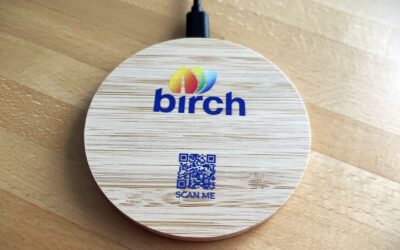In the last 40 years we’ve witnessed a monumental digital revolution that’s pretty much changed every aspect of human life to some degree. From the way we consume and digest language, to the way we interact and communicate both socially and in our day-to-day life, the digital world has been by far one of the most remarkable revolutions in modern times.
The digital world has streamlined time-consuming processes and made human life more efficient, from touch-to-tap card payment transactions and online shopping to self-service apps and QR code offers.
Handwriting has been surpassed by typing and media consumption has evolved from the television to tiny devices used anywhere and everywhere. For a lucky few it’s even brought fame and fortune through the rise of online ‘influencer’ status.
Our family and friends are only a text message away, and even the way in which we learn has altered. We’ve been transported from an all paper and whiteboard environment to predominantly digitally led learning, which has no doubt made learning experiences more engaging.

Industries like plumbing for example, are unable to use digital devices because electronics and water based training don’t mix. However, for many industries the allure of digital media lies in its convenience, offering easy access to online resources, the potential for interactive learning activities, and an ability to streamline organisation through cloud storage systems. These advantageous features have enhanced collaborative projects and allowed for instant updates and revisions.
But does digital learning enable people to learn more effectively with improved comprehension, reading ability and memory retention?
Benefits of paper based learning
- Research indicates that handwriting on paper can significantly enhance memory retention and comprehension of new information. This is especially relevant for students who benefit from a multi-sensory approach to learning.
- Studies have shown that writing by hand encourages better cognitive processing when compared with typing on a keyboard; this is attributed to the slow nature of handwriting which allows for greater engagement with material.
- The versatility of paper extends beyond note-taking; it serves as a canvas for drawing diagrams, outlining problem-solving steps, and engaging in various educational activities that foster deeper cognitive engagement and understanding.
- The act of writing itself—physically forming letters and words—promotes fine motor skill development which is vital for overall physical growth in young learners.
- Paper’s accessibility makes it an indispensable resource within diverse educational contexts. Being cost-effective and readily available allows students from all socioeconomic backgrounds to utilise this essential tool without barriers typically posed by technology disparities.
- Traditional pen-and-paper methods may better support certain educational objectives, particularly when it comes to deep comprehension and retention of information.
- The tactile experience provided by paper can enhance focus and reduce distractions commonly associated with digital devices.

Our work for the education sector…
We’ve been producing training manuals for a diverse range of educational organisations for many years. Well-designed, professionally printed training manuals form a standardised process for students and new hires. They’re also an essential tool for effective ongoing staff training.
By providing clear guidelines, training documents reduce the time it takes for employees to adjust and become productive team members as well as fostering a culture of learning and accountability while empowering individuals with the knowledge they need to succeed in their roles.
Our warehouse is currently home to hundreds of printed products, from training manuals & packs, to promotional materials, brochures and award certificates, all produced for our customers in the education sector.
We realise how important it is to have the necessary educational tools for students, whether they’re learning a trade or working towards a degree, so before rushing towards digitisation in educational environments, take the time to evaluate your goals and consider whether leveraging traditional methods or a balanced approach between both formats might foster a richer learning experience.




